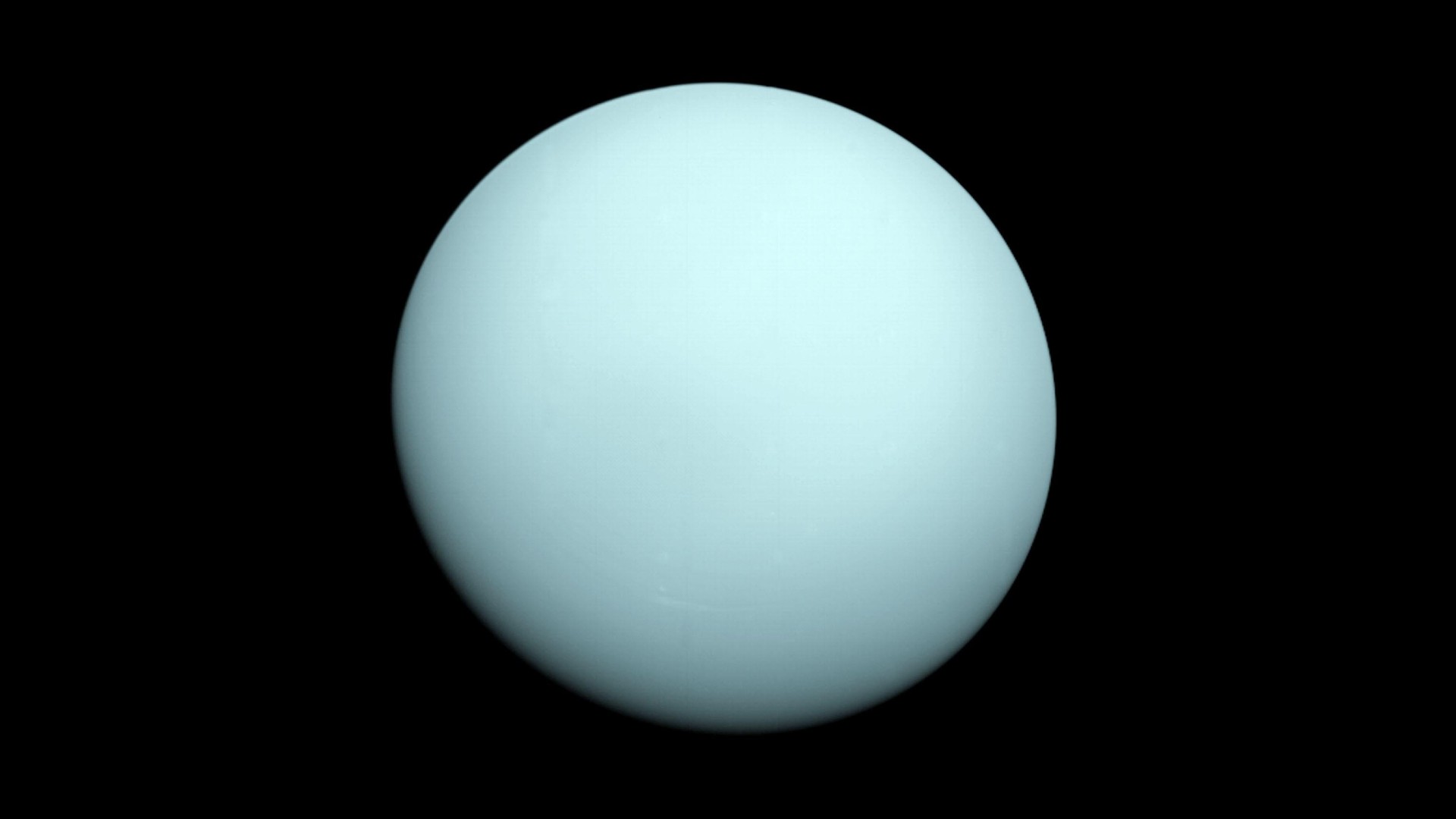The moon will eclipse Uranus Saturday (Jan. 28)
The far north of the world and parts of Asia will get to see the serene blue planet slip behind the moon.

A lucky few will have a rare glimpse of one of the solar system's outer planets disappearing behind Earth's moon.
Uranus, which is visible only through a telescope, will disappear behind the moon during an occultation on Saturday (Jan. 28), and people in the far north of the world and a portion of Asia will have the chance to watch it.
At least part of the event will be visible in areas of Alaska, Canada's very far north, Greenland, Russia and Japan, according to a visibility map from In-The-Sky.org. The occultation is listed at 10:28 p.m. EST Saturday, Jan. 28 (0328 GMT on Jan. 29) but visibility will vary by region.
There are no livestreams listed on YouTube yet, but if we spot one we'll be sure to let readers know.
Related: The 12 best night sky events to see in 2023
Occultations happen when one celestial body appears to pass behind another from the perspective of Earth, although in reality, Uranus and the moon are separated by many billions of miles (or kilometers). Uranus' average distance from the sun is roughly 1.8 billion miles (2.9 billion km), according to NASA. That's about 19 times the distance from the Earth to the sun.
"Lunar occultations are only ever visible from a small fraction of the Earth's surface," In-The-Sky.org wrote. "Since the moon is much closer to the Earth than other celestial objects, its exact position in the sky differs depending on your exact location."
Get the Space.com Newsletter
Breaking space news, the latest updates on rocket launches, skywatching events and more!

Looking for a telescope to see the planets or anything else in the December night sky? We recommend the Celestron Astro Fi 102 as the top pick in our best beginner's telescope guide.
Uranus is the first planet with a named discoverer, as it did not come to light until relatively high-powered telescopes were available. English astronomer William Herschel spotted spotted the planet on March 13, 1781 and suggested naming it after his patron, King George III. The name "Uranus" was suggested by German astronomer Johann Elert Bode, whose observations helped confirm the newly found object was a planet.
If you miss this occultation of Uranus due to cloudy skies or unlucky geography, there's another opportunity coming up on Sept. 29 that will be visible from portions of Canada, eastern Alaska and the western United States, In-The-Sky.org says.
If you're looking for binoculars or a telescope to see the solar system planets like Uranus, our guides for the best binoculars and the best telescopes have options that can help. If you need photography gear, consider our best cameras for astrophotography and best lenses for astrophotography to prepare for the next planet sight.
Editor's note: If you capture a view of Uranus and the moon and want to share it for an image gallery or story, let us know! You can send images and comments in to spacephotos@space.com.
Elizabeth Howell is the co-author of "Why Am I Taller?" (ECW Press, 2022; with Canadian astronaut Dave Williams), a book about space medicine. Follow her on Twitter @howellspace. Follow us on Twitter @Spacedotcom or Facebook.
Join our Space Forums to keep talking space on the latest missions, night sky and more! And if you have a news tip, correction or comment, let us know at: community@space.com.

Elizabeth Howell (she/her), Ph.D., was a staff writer in the spaceflight channel between 2022 and 2024 specializing in Canadian space news. She was contributing writer for Space.com for 10 years from 2012 to 2024. Elizabeth's reporting includes multiple exclusives with the White House, leading world coverage about a lost-and-found space tomato on the International Space Station, witnessing five human spaceflight launches on two continents, flying parabolic, working inside a spacesuit, and participating in a simulated Mars mission. Her latest book, "Why Am I Taller?" (ECW Press, 2022) is co-written with astronaut Dave Williams.









